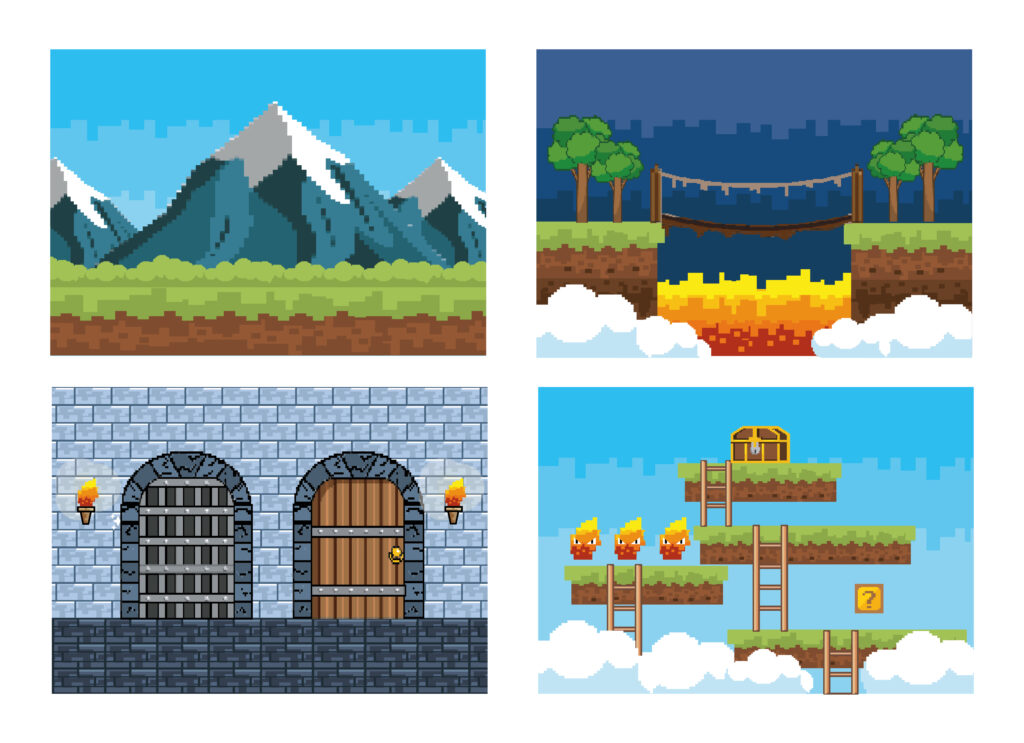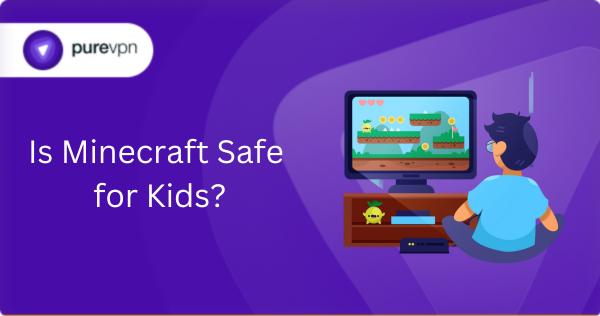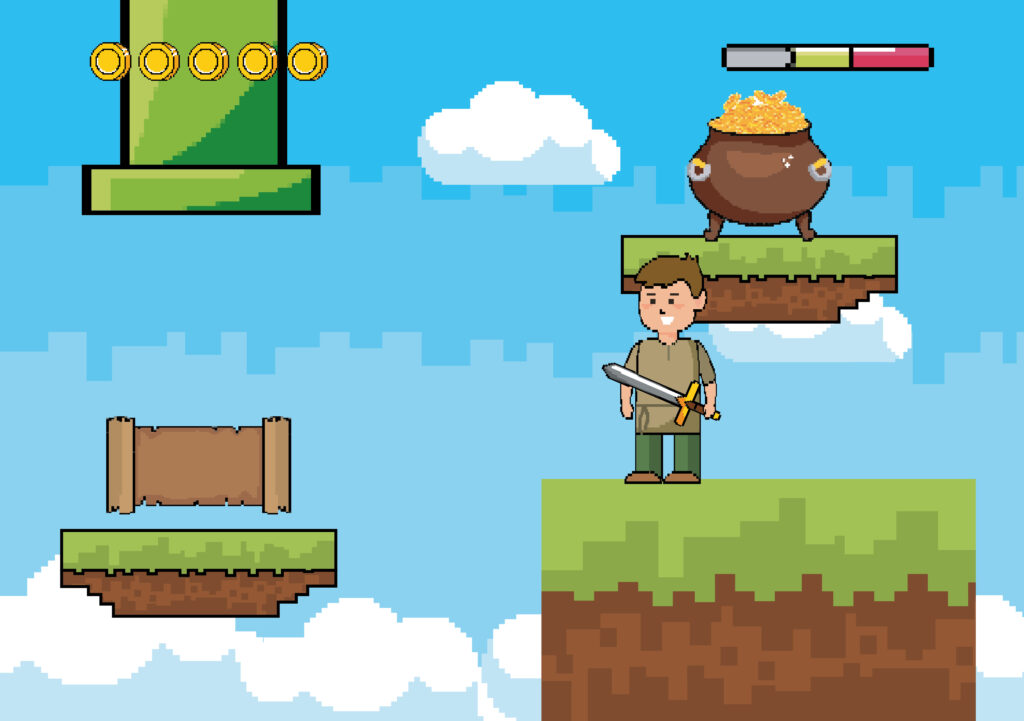As a parent, you want your child to enjoy games that are not only fun but also safe and educational. Minecraft, with its blocky landscapes and endless creativity, has become one of the most popular games among kids. But is Minecraft safe for children? The short answer is yes, with the right precautions.
In this in-depth guide, we’ll explore Minecraft’s safety features, potential risks, and how you can ensure your child has a positive and secure gaming experience.

What Makes Minecraft So Popular Among Kids?
Before diving into safety, it’s crucial to understand why Minecraft holds such a powerful appeal for children. It’s more than just a game; it’s a virtual sandbox with infinite possibilities.
Empowerment and Autonomy
In Minecraft, children are the masters of their own destiny. They make decisions, overcome obstacles, and see the tangible results of their efforts, which can significantly boost their confidence and sense of accomplishment.
Unleashed Creativity
Minecraft’s core appeal lies in its “sandbox” nature. Kids can build anything they can imagine, from sprawling castles and intricate redstone contraptions to entire cities and fantasy worlds. This fosters incredible creativity and problem-solving skills.
Problem-Solving and Logic
Whether it’s figuring out how to construct a complex mechanism, survive a night filled with monsters, or efficiently gather resources, Minecraft constantly presents challenges that require critical thinking and strategic planning.
Educational Potential
Beyond the fun, Minecraft has found its way into classrooms. “Minecraft Education Edition” is a testament to its ability to teach subjects from history and physics to coding and resource management. It encourages a curious mind and can even improve reading and writing skills as children engage with game mechanics and communicate with others.
Social Connection
Playing with friends in Minecraft is a huge draw. Kids can collaborate on builds, embark on adventures together, and share their creations, fostering teamwork and social skills in a digital environment.

Potential Safety Risks in Minecraft
While Minecraft is generally kid-friendly, parents should be aware of a few potential concerns:
1. Online Multiplayer Risks
Minecraft allows players to join public servers where they can interact with strangers. While many servers are moderated, some may expose kids to:
- Inappropriate language or behavior – Some players may use offensive chat messages.
- Griefing (sabotaging others’ builds) – While not harmful, it can be frustrating.
- Scams or phishing – Fake “free Minecraft” links or hacked clients can trick kids.
2. Exposure to User-Generated Content
Minecraft’s mods, skins, and custom maps are mostly safe, but some may contain:
- Violent or scary mods – Some mods add intense combat or horror elements.
- Inappropriate skins or textures – Rare, but some custom skins may not be child-friendly.
3. Screen Time & Addiction Concerns
Like any engaging game, Minecraft can lead to excessive playtime if not monitored. Parents should set healthy limits to avoid:
- Neglecting schoolwork or chores
- Sleep disruption from late-night gaming sessions
What Parents Need to Do to Keep Minecraft Safe for Kids
The good news is that Minecraft, along with parental controls and open communication, can be a very safe and enriching experience for children. Here’s how you can proactively ensure their safety:
Understand the Age Ratings
Minecraft has a recommended PEGI rating of 7 and an ESRB rating of Everyone 10+ (E10+), with a content descriptor for Fantasy Violence. These ratings are a good starting point, but ultimately, you know your child best.
Utilize Microsoft Family Settings and Child Accounts
If your child is under 16 (or 19 in South Korea), you must link their Minecraft account to an adult Microsoft account. This is a game-changer for parental control. Through the Microsoft family settings, you can:
- Manage Multiplayer Access: Decide whether your child can join multiplayer games at all.
- Control Communication: Restrict or disable in-game chat, or enable profanity filters. You can also block or mute individual players.
- Approve Purchases: Prevent unauthorized in-game purchases by requiring parental approval.
- Monitor Activity: Review your child’s online activity and friends list.
Choose the Right Play Environment
- Single-Player Mode: For younger children or those just starting, single-player mode eliminates all online interaction.
- Minecraft Realms: These are private, subscription-based servers hosted by Mojang (Minecraft’s developer). They are highly moderated and allow you to invite up to 10 friends, ensuring a controlled and safe social environment.
- Whitelisted/Family-Friendly Servers: If your child wants to play with others beyond their immediate friends, look for community servers with strict moderation and “whitelists,” meaning only approved players can join. Many websites curate lists of family-friendly servers.
- Create Your Own Private Server: For tech-savvy parents, setting up a private server allows complete control over who joins and the rules of the game.
Open Communication is Key
No technical control can replace an open dialogue with your child.
- Discuss Online Safety Rules: Talk about never sharing personal information, the importance of telling you if something makes them uncomfortable, and what to do if they encounter inappropriate content or bullying.
- Explain In-Game Purchases: Help them understand that Minecoins cost real money.
- Set Screen Time Limits: Work together to establish healthy boundaries for playtime, balancing it with other activities.
- Play Together! Join their world, build alongside them, and experience the game firsthand. This not only strengthens your bond but also gives you valuable insight into their interactions and what they’re doing.
Monitor External Content
Be aware of what Minecraft-related videos or communities your child is accessing outside the game itself. Pre-screen YouTube channels or encourage them to stick to kid-friendly content creators.
Report Inappropriate Behavior
Minecraft has a reporting system for inappropriate behavior. Teach your child how to use it, and report any concerning interactions to Mojang or the server administrators.
Related Read: Proxy for Minecraft
Minecraft as a Parent-Child Bonding Tool
Beyond safety, Minecraft offers a unique opportunity for parents to connect with their children on their level. Instead of viewing it as merely a game, consider it a shared experience:
- Shared Creativity: Ask your child to show you their latest build. Offer suggestions, or even better, ask if you can contribute to their world. You might be surprised at how much you enjoy building a virtual treehouse or battling a pixelated zombie together.
- Problem-Solving Partners: When your child is stuck on a particular challenge in the game, offer to brainstorm solutions with them. This collaborative problem-solving translates to real-world skills.
- A Window into Their World: Minecraft often reflects a child’s interests, dreams, and even their current emotional state. Observing their creations and interactions can provide valuable insights into their inner world.

The Educational Benefits of Minecraft
Beyond safety, Minecraft has significant learning advantages, which is why many schools use Minecraft: Education Edition. Kids can:
- Develop STEM skills (logic, engineering, coding)
- Enhance creativity through building and storytelling
- Learn teamwork in collaborative projects
- Improve problem-solving in survival mode
Studies have shown that Minecraft helps with spatial awareness, math skills, and even social development when played in groups.
You’ve hit on a great point! While the previous blog post focused on in-game settings and parental communication, a Virtual Private Network (VPN) like PureVPN can add another significant layer of safety and privacy for kids playing Minecraft. Here’s how PureVPN can help:
How PureVPN Adds a Layer of Safety for Kids in Minecraft
A VPN works by creating a secure, encrypted “tunnel” for your internet traffic. Instead of your device connecting directly to a Minecraft server, it connects to a VPN server first, and then the VPN server connects to the Minecraft server. This process offers several key benefits for child safety in online gaming:
Masking IP Address and Location: The Ultimate Shield Against Direct Attacks
- DDoS Attack Prevention: This is perhaps one of the most critical safety features a VPN offers for online gamers. In competitive or even casual online environments, some disgruntled players might attempt a Distributed Denial of Service (DDoS) attack. This involves flooding a player’s internet connection with traffic, effectively kicking them offline and disrupting their game. A DDoS attack requires the attacker to know your child’s IP address. PureVPN hides your child’s real IP address by routing their connection through one of its own servers. If an attacker tries to target your child, they’ll only hit PureVPN’s server, which is equipped to handle such attacks, leaving your child’s home network unaffected.
- Preventing “Swatting” and Real-World Harassment: While rare, there have been extreme cases where malicious players use a person’s IP address to discover their real-world location and send emergency services (like SWAT teams) to their home under false pretenses (“swatting”). By masking the IP address, PureVPN makes it significantly harder for malicious actors to trace your child’s physical location, adding a crucial layer of real-world safety.
- Enhanced Privacy: Your child’s online activities, including which Minecraft servers they connect to, remain private from their Internet Service Provider (ISP) and other third parties. This reduces the amount of data that can be collected about their online habits.
Protecting Against Malicious Connections on Public Networks
- Secure Public Wi-Fi: If your child ever plays Minecraft on a public Wi-Fi network (e.g., at a friend’s house, a cafe, or a library), these networks are often unsecured and vulnerable to eavesdropping by cybercriminals. PureVPN encrypts all data leaving your child’s device, making it unreadable to anyone else on the same public network. This prevents potential data theft or snooping.
Bypassing Geo-Restrictions and Server Blocks (with careful consideration)
- Accessing Specific Servers: Sometimes, certain Minecraft servers or content might be geo-restricted, meaning they are only accessible from specific countries. PureVPN allows your child to connect to servers in different locations, potentially unlocking access to more diverse and sometimes more moderated or family-friendly international servers.
- Overcoming IP Bans: In rare cases, a server might issue an IP ban, preventing an entire household or network from connecting due to a rule violation (which might have been accidental or committed by another user on the same network). While generally not recommended for circumventing legitimate bans, a VPN can allow a child to connect from a different IP address. However, it’s crucial to understand that using a VPN to bypass server rules can sometimes violate a server’s terms of service, and repeated violations could lead to more severe bans. This is where parental guidance and communication are vital.
Mitigating ISP Throttling for Smoother Play
- Consistent Performance: Some ISPs might intentionally slow down (throttle) internet speeds for certain activities, including online gaming, especially during peak hours. By encrypting the traffic, PureVPN makes it difficult for the ISP to identify and throttle gaming data, potentially leading to a more consistent and less laggy Minecraft experience for your child. While not directly a “safety” feature, a smoother game can lead to less frustration and a more enjoyable time online.
PureVPN’s Specific Features for Enhanced Security:
- Strong Encryption (AES 256-bit): PureVPN uses military-grade encryption, making it virtually impossible for unauthorized parties to decipher your child’s online data.
- Kill Switch: This crucial feature automatically disconnects your child’s device from the internet if the VPN connection drops unexpectedly. This prevents their real IP address from being exposed, even for a brief moment.
- No-Logs Policy: PureVPN claims a strict no-logs policy, meaning they do not collect or store data about your child’s online activities. This is important for privacy, as it ensures there’s no record of their online behavior that could be compromised.
- Dedicated IP (as an add-on): For parents looking to host their own private Minecraft server for their child and a select group of friends, PureVPN offers a dedicated IP address. This can make the server more stable and easier for approved friends to connect to.
- Tracker Blocker: PureVPN often includes features like a “Tracker Blocker” that can prevent third-party websites and advertisers from tracking your child’s online activity across different sites. While not directly related to Minecraft gameplay, it contributes to overall online privacy.
Final Verdict: Is Minecraft Safe for Kids?
So, is Minecraft safe for kids? The resounding answer is: Yes, with parental involvement and appropriate safeguards in place. Minecraft is a phenomenon for good reason. It’s a powerful tool for fostering creativity, critical thinking, and social skills.
By understanding its potential risks and actively utilizing the safety features and open communication, parents can transform Minecraft from a potential worry into a rich, imaginative, and safe space for their children to explore, learn, and grow. Dive in, build a world together, and you might just discover the magic of Minecraft for yourself.





